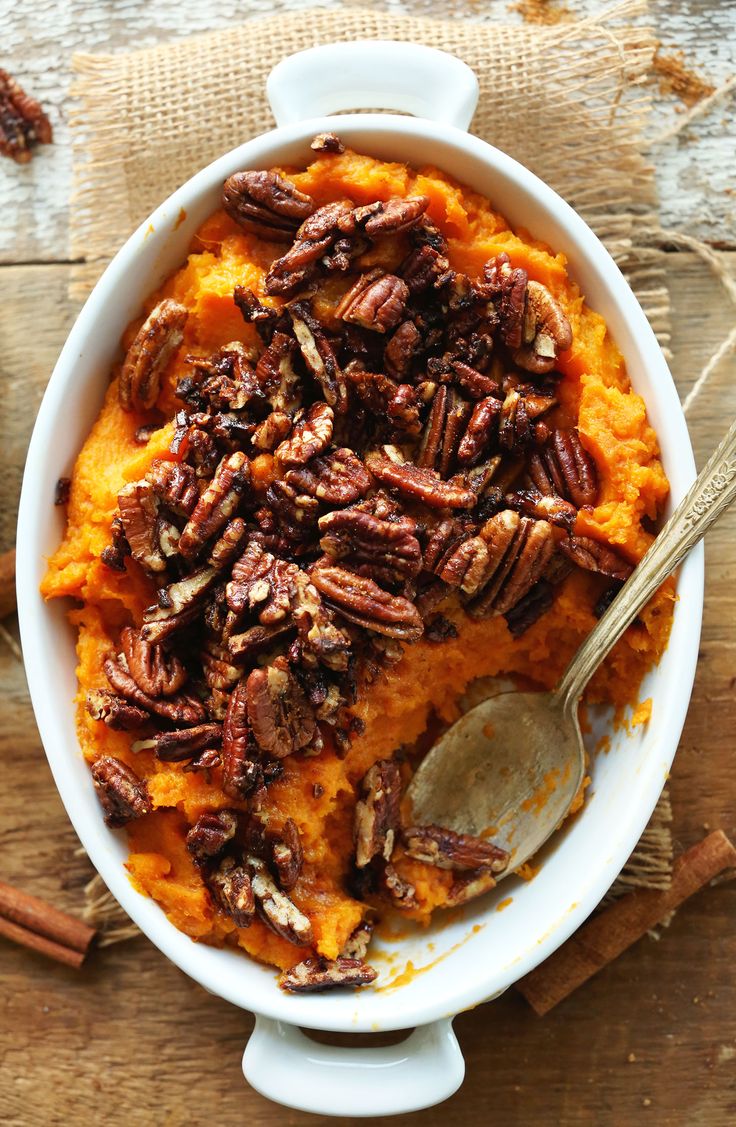Sweet Potatoes - Economical, Delicious and Nutritious
TEXARKANA, Ark. –
Sweet Potatoes are filling stores, farmers markets and roadside stands. They are not the prettiest vegetable, but they are popular, especially in the fall. Maybe it is because they are economical, delicious, nutritious and easy to prepare.
Both Vitamin A and C are found in sweet potatoes. Vitamin C is needed by the body for healthy gums and body tissues while Vitamin A is needed for growth, normal vision and healthy condition of skin.
One cup of cooked sweet potato provides 30mg of beta carotene (Vitamin A). They have four times the USRDA for beta carotene when eaten with the skin on.
They also are a great source of vitamin E and are virtually fat free. Just 2/3 of a cup of sweet potatoes provides 100 percent of the USRDA for Vitamin E without the unwanted fat many times associated with this vitamin.
Sweet potatoes also supply small amounts of the B vitamins and other minerals, including potassium and iron. They are also a good source of dietary fiber which helps promote a healthy digestive tract.
A medium-sized sweet potato contains just 118 calories, which is not too many, but enough to supply the body with valuable food energy. Plus they are virtually fat free, cholesterol free and very low in sodium.
When selecting sweet potatoes, choose those that are firm, smooth, reasonably clean and free from blemishes. Healed scars do not injure the flesh of the sweet potato, but moisture or decay spots indicate flesh damage and off-flavors.
Some sweet potatoes have copper-colored skins, others have light tan skins and some have rosy-red skins. All have yellow to deep orange flesh. After cooking, copper and red skinned varieties are usually softer than the lighter colored sweet potatoes.
Sweet potatoes should be stored in a cool, dry place and used within a few days. Do not store sweet potatoes in the refrigerator. It can slow sprouting but causes the starch to convert to sugar.
The rich flavor of sweet potatoes makes them ideal to bake without added ingredients. When baking, do not wrap in foil. Scrub well, poke a fork into them a time or two to allow steam to escape and, if desired, lightly oil the surface. Bake at 450 degrees for 45 minutes or until fork tender.
When boiling sweet potatoes, be sure to cook them in their jackets. This will prevent some of the sweetness from being dissolved in the water. The skin will be easy to remove and will take less of the potato with it when peeled. Since Vitamin C is easily destroyed by air, cook sweet potatoes quickly and serve hot to prevent nutrient loss.
If you find a good buy on sweet potatoes, purchase extra and freeze for later use. For more information, click here for your free copy of Arkansas' Fresh Sweet Potatoes, and a copy of the handout with recipes - Sweet Potatoes: Economical & Nutritious - contact the Miller County Extension Office, 870-779-3609 or visit us in room 215 at the Miller County Courthouse. We're online at chadley@uada.edu, on Facebook at UAEXMillerCountyFCS/CarlaHaleyHadley, on Twitter @MillerCountyFCS or on the web at uaex.uada.edu/Miller.
This is my favorite sweet potato recipe that I serve every Thanksgiving. It is almost like a dessert instead of a vegetable.
Sweet Potato Soufflé
2 cups sweet potatoes, cooked and mashed
1 1/4 cup sugar
2 eggs
1/2 teaspoon cinnamon
1/2 teaspoon nutmeg
1/3 cup melted margarine
1 cup milk
1/2 cup chopped nuts
1/2 cup brown sugar, packed
1/3 cup melted margarine
3/4 cup cornflakes, crushed
Combine first 7 ingredients; mix together thoroughly. Pour into a 2-quart casserole which has been coated with nonstick cooking spray. Bake 30 minutes at 400 degrees. While this is baking, combine remaining four ingredients in small bowl and mix thoroughly. Spread over casserole and bake 10 minutes longer, or until mixture is firm.
By Carla Haley-Hadley
County Extension Agent - FCS
The Cooperative Extension Service
U of A System Division of Agriculture
Media Contact: Carla Haley-Hadley
County Extension Agent - FCS
U of A Division of Agriculture
Cooperative Extension Service
400 Laurel Street, Suite 215 Texarkana AR 71854
(870) 779-3609
chadley@uada.edu
Related Links
The Arkansas Cooperative Extension Service is an equal opportunity institution. If
you require a reasonable accommodation to participate or need materials in another
format, please contact your County Extension office (or other appropriate office)
as soon as possible. Dial 711 for Arkansas Relay.
Pursuant to 7 CFR § 15.3, the University of Arkansas System Division of Agriculture
offers all its Extension and Research programs and services (including employment)
without regard to race, color, sex, national origin, religion, age, disability, marital
or veteran status, genetic information, sexual preference, pregnancy or any other
legally protected status, and is an equal opportunity institution.
